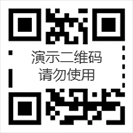Radar level meter is a commonly used industrial measuring instrument used to measure the height of liquid or solid materials in a tank or container. The following is a detailed analysis of its application scope and working principle:
1. Application scope
Radar level meter has a wide range of applications, including but not limited to the following scenarios:
●High or low temperature environment:
Radar level gauges are able to operate in extreme temperature conditions and can typically withstand a temperature range of -40°C to +75°C, making them suitable for use in high temperature environments such as steel and petrochemical.
●Corrosive or hazardous chemical environments:
Since the transmitting antenna of the radar level meter is not in direct contact with the liquid, they can be used to measure the level of corrosive, acidic, alkaline or hazardous liquids, such as chemical storage tanks, acid and alkali storage tanks, etc.
●Pressure vessels or closed tanks:
Radar level gauges can penetrate the tops of closed containers and are not affected by the pressure and gas inside the container. They are suitable for measuring the liquid level of pressurized tanks, reactors, etc.
●Environment with dust or steam:
In some material storage tanks, such as cement, grain, fertilizer and other solid materials, a large amount of dust will be generated. The radar level meter is not affected by dust and can stably measure the height of the material.
●Liquid surface with foam:
Since the millimeter wave of the radar level meter has strong penetrability, it can penetrate the foam layer and measure the true height of the liquid level. It is suitable for use in sewage treatment plants, biochemical pools and other scenarios.
●Large storage tanks:
Radar level meters usually have a longer measurement distance and can measure liquid level heights within a range of tens of meters. They are suitable for level measurement in large oil tanks, raw material warehouses, and other scenarios.
●Food and pharmaceutical industries:
In some scenarios with high hygiene requirements, radar level meters provide the advantage of non-contact measurement, avoiding direct contact with the measured liquid or material, thereby reducing the risk of contamination and meeting hygiene standards.
●Rapid filling or discharge:
In environments where the liquid level changes rapidly (such as filling, pumping stations, etc.), the high response speed of the radar level meter can monitor the changes in the liquid level in real time to ensure the safety and accuracy of the process.
●Containers with special shapes or complex structures:
Radar level meters are not affected by container shapes and obstacles and are suitable for use in containers with complex internal structures or irregular shapes.
●Accurate liquid level monitoring:
Radar level meters have high accuracy and can usually achieve measurement errors at the millimeter level. They are suitable for scenarios that require accurate liquid level monitoring, such as chemical production and pharmaceutical processes.
2. Working Principle
The working principle of radar level meter is based on radar principle, which uses the propagation and reflection of electromagnetic waves (usually microwaves) to determine the position of liquid level. The specific process is as follows:
●Emitting electromagnetic waves:
The radar level meter contains a transmitting antenna inside, which generates electromagnetic wave signals of a certain frequency through the electromagnetic wave transmitter.
●Propagation of electromagnetic waves:
The emitted electromagnetic wave signal will propagate in the air until it encounters the surface of liquid or solid material.
●Reflection of electromagnetic waves:
When electromagnetic waves encounter the surface of liquid or solid materials, part of the electromagnetic waves will be absorbed and the other part will be reflected. The reflected electromagnetic waves are received by the receiver.
●Signal processing:
The receiving antenna inside the radar level meter receives the reflected electromagnetic wave signal and sends it to the signal processor for processing. The signal processor calculates the position of the liquid level or material surface based on the strength and time of the received electromagnetic wave signal.
●Display results:
The radar level meter converts the calculated liquid level or material surface position information into a digital signal and displays it through a display screen or output interface.

